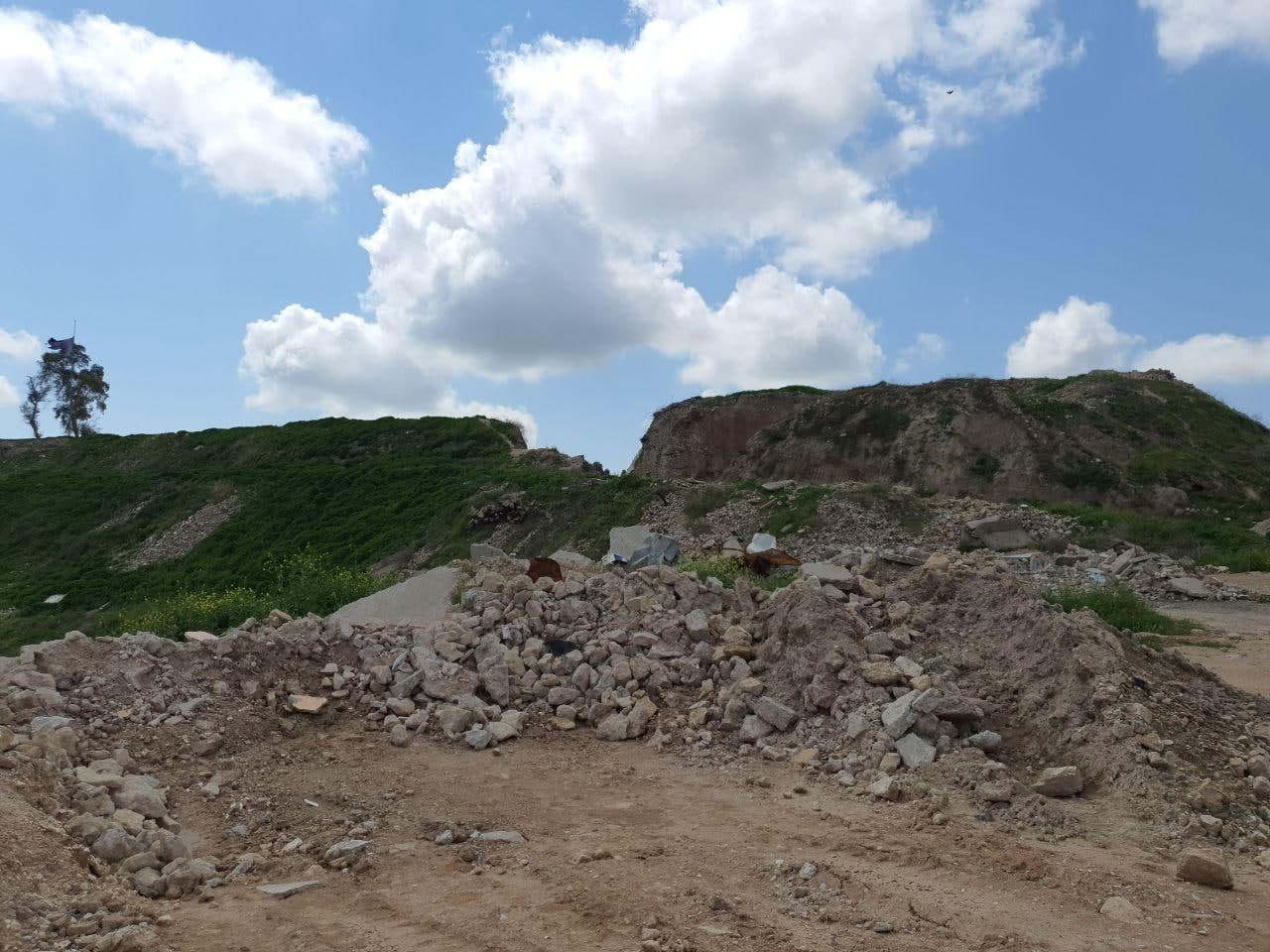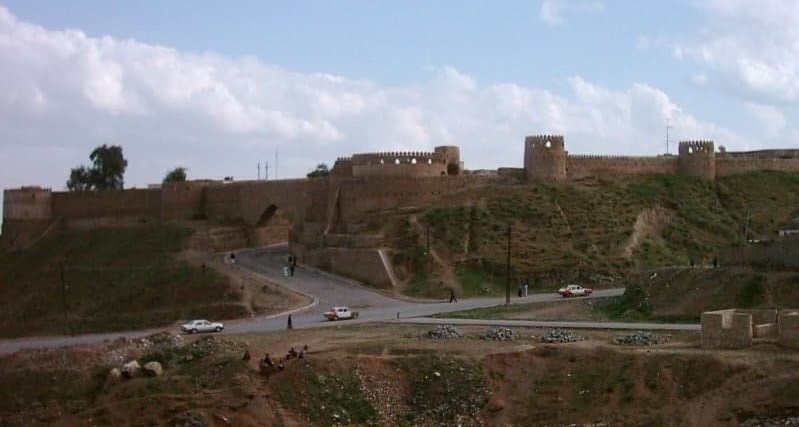“Whoever watches the ruins of our castle does not sleep at night,” this is how the Turkmen poet Mehmet Meshooglu sums up the pain and heartbreak of the people of Tal Afar over the citadel destroyed by the Islamic State of Iraq and Syria ISIS.
"The road to the castle is like the road to heaven," to call at the conclusion of his poem, addressing the castle, "Gather the people, draw joy on their faces, and live in the prestige that we entrusted you with," Meshooglu tweeted.
The castle was widely demolished and blown up by ISIS members with explosives when they took control of Tal Afar district in Nineveh Province in mid-2014.
The demolition and bombing operations included the ancient castle walls and gates, in addition to the government buildings that were completely located inside the fortress up to end of 2014.
After the toppling of Saddam Hussein's regime in 2003, the citadel housed the municipality and local police headquarters. The castle itself was used as a military base for US forces in the battle of Tal Afar in 2005.
Symbol of peaceful coexistence and defiance
"The destruction of the castle was part of the targeting of Nineveh landmarks, where Daesh destroyed the shrine of the Prophet Yunus and Bab Nergal in Mosul and the monuments of Nimrud, Hatra and others... ISIS committed this act as part of a series of targeting and destroying ancient civilizations," says Amin Omar Haider, director of Tal Afar archeology department.
Haider reveals to KirkukNow that the castle was devoid of archaeological holdings, when the organization blew up it, as all the artifacts were sent to Baghdad, during the time of the former regime.
"The castle went through many stages of expansion, in different periods, and it was also exposed - on the other hand - to several attacks throughout history, the last of which was carried out by ISIS, which completely destroyed the castle, and all its buildings most of it were considered heritage buildings as the most recent dates back to the 1930s,” Haider continues.
Regarding its importance, Haider discloses, “The castle had a geographical importance because it was located on the caravan route between Iraq and the Levant, and it was located on a high hill that qualified it to control all areas of the island, in addition to that it was located on a spring of water, contributing to the irrigation of large areas south of town where the orchards of Tal Afar are famous for the production of figs and pomegranates, as well as wheat and barley.”
He asserts that "the castle is one of the important archeological landmarks of Iraq, from which the first spark of the 1920s revolution against the Britons was launched, in addition to being a human symbol that unites the components of Tal Afar, as long as poets wrote and artists sang for it."
Tal Afar district, 70 km west of Mosul, center of Nineveh province, was captured by ISIS in June 2014, and most of its population of about 524,000 people, according to 2019 statistics by ministry of planning, were forced to flee to the central and southern governorates, the Kurdistan Region and Kirkuk and some migrated to Turkey yet later about 60% returned home after regain battle in August 2017.

Nineveh, 2021: Ruins for one of the buildings of Tal Afar Castle. Jaafar al-Talafari
Fortress connected to rivers of Babylon and valleys of Assyria
"The residents of Tal Afar unanimously agree that the glory of the ancestors has all been fused in the castle. This historical monument, which was narrated by blood, poems and songs of the knights, was the only emotional feature that reminds the new generations of the value of the homeland," according to the Iraqi historian Hamid Al-Matabai.
"This castle transmits to generations by inheritance or by predestination lessons that cannot be forgotten, lessons that teach honor and learn the logic of strength and wisdom, teaching them all that the castle was not built into a structure of white plaster or decorated with palatine or squirrel alabaster in order to be a watchtower to expel thieves of the Assyrian walls, but the castle is the home of genealogies and sanctities which have common histories in the rivers of Babylon and the valleys of Assyria,” Matbai elaborates.
The castle was demolished several times, first in 1841 by the governor of Baghdad, Mehmed Pasha Inge Bayrakdar, following a revolt by the city's residents against him. He had occupied the castle and ordered its demolition and turned it to a plain floor. All the walls and fortresses surrounding the castle were demolished, yet all that did not cause serious damage to the castle due to its immunity and durability.
The second time was in 1920, when its walls were demolished and its main door was destroyed by the Britons. Their goal in raising the main door of the castle was to pave the way for their cars to climb on the castle, and they put this ancient door on the valley in which the water of the spring flows, to be used as a small bridge for pedestrians to cross.
Rebuilding the castle is revival of Tal Afar soul
"This historic fortress was beautiful and lofty before ISIS destroyed it, and this is an invitation to the Iraqi government and UNESCO to work on restoring it because of its ancient historical position. It is the cultural identity of Tal Afar and the demand for its reconstruction is very important," says Turkmen activist Ammar Hassan.
Rebuilding the castle is a gateway to community reconciliation
"International organizations and relevant local authorities should strive seriously to rebuild the fortress, which was the largest common factor for its residents, but we can consider it a gateway to community reconciliation that NGOs constantly talk about and strive to achieve... Therefore, its reconstruction is restoring the spirit to Tal Afar," Hassan believes.
Nineveh Governor Najm al-Jubouri promised, vowed in an event her attended in Talafar on February 2, 2022, that he would work to include the reconstruction of Tal Afar Castle in the 2022 plan.
According to historical sources, the ancient castle of Tal Afar was built in the Assyrian era, and the city was known at the time as (Namet Ishtar), which means (the farm or gardens of God Ishtar) while the Romans renewed the building of the castle and ruled its walls.
Caliph Marwan bin Muhammad II, the last of the Umayyad caliphs, who was governor of the Jazira region, renewed the construction of the castle and it was called (Marwan Castle). Some even thought that the fortress was built in the Umayyad era, and Marwan had assumed the jurisdiction over this area in the year 102 AH / 720 AD.
The area of the castle is 28,000 square meters, and it was surrounded by main and secondary walls, including a width of 3.30 meters and a height of about 6 meters, built by pure gypsum and special stones. There were four large towers at the corners of the fortress and several secondary towers in between.
Before 2014, as a result of the deteriorating security conditions in Tal Afar, the castle was turned into a complex for government departments, as it included the District Commissioner, its local council, the headquarters of the Tal Afar Protection Force (the Iraqi army), the police directorate, the emergency department, the court, the counter-terrorism department, and the local television channel, affiliated with the Iraqi Media Network, a semi-governmental body.
"Rebuilding the castle in accordance with its historical position is a public demand, and this is a call to the concerned organizations, especially UNESCO, as the castle represents a great heritage and a symbol of civilization not only for Tal Afar and its residents, but for all of Iraq, and rebuilding it will be a step to strengthen unity, love and peace in the city," Haider applealled.
Photos of Tal Afar Citadel ahead of its demolition from various sources.





